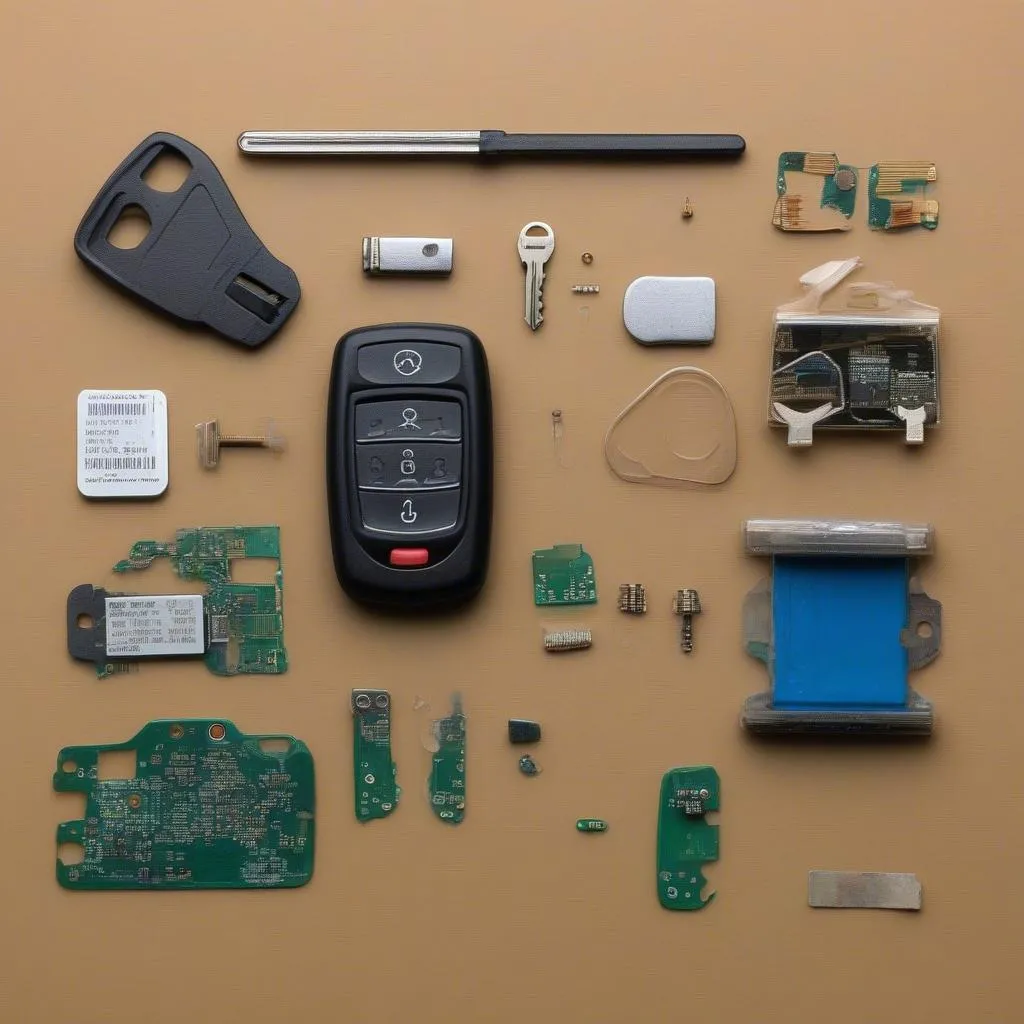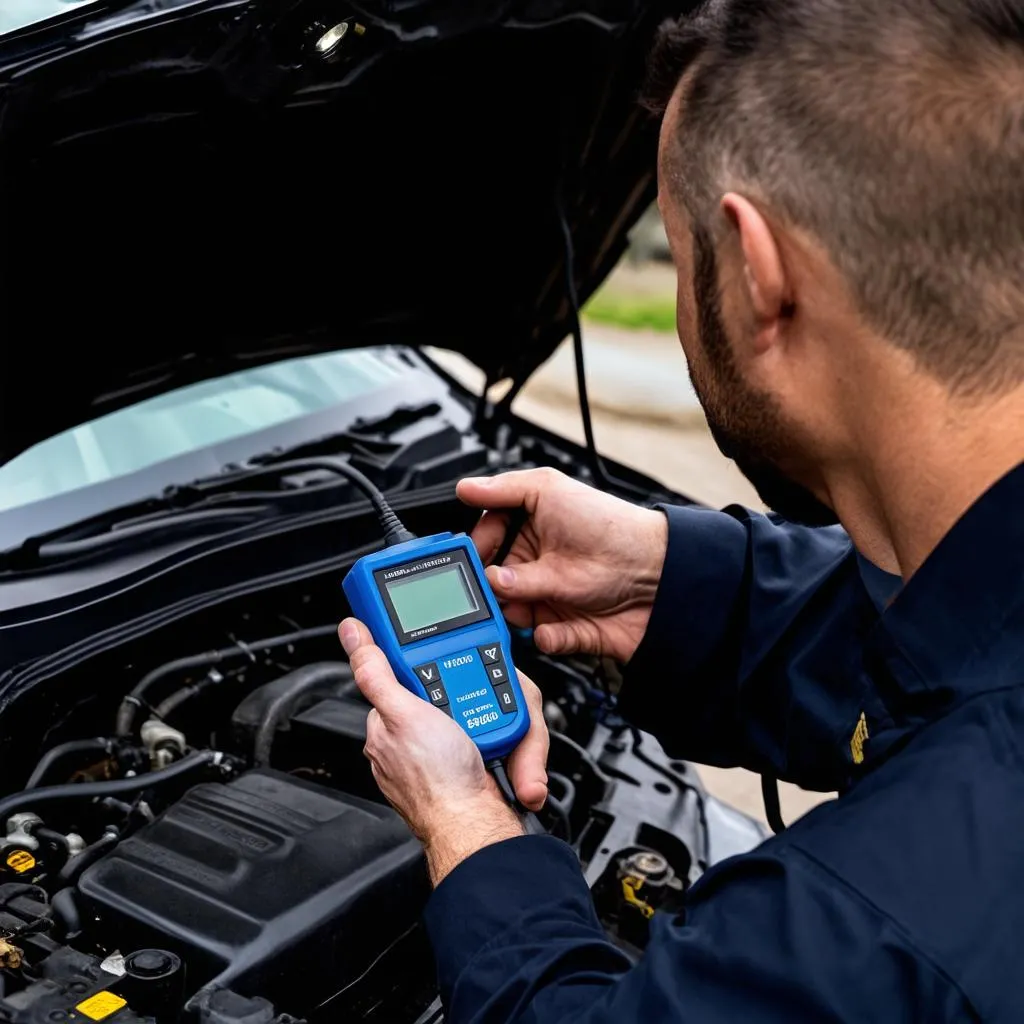Few things are more frustrating than a car key that doesn’t work, especially when you’re in a hurry. If your Mercedes car key has gotten wet and is no longer cooperating, don’t panic. This is a common issue, and with a few simple steps, you can often fix it yourself.
Why Does a Wet Car Key Stop Working?
Modern Mercedes car keys are essentially small computers with a transponder chip inside. This chip sends a signal to your car’s ignition system, allowing you to start the engine. When water gets into the key, it can interfere with this signal or even damage the delicate electronic components.
Signs Your Mercedes Key is Water Damaged
You might suspect water damage if:
- The key fob buttons are unresponsive or work intermittently.
- The car key doesn’t unlock or lock the doors remotely.
- The engine refuses to start, even when the key is inserted.
 Mercedes Key Fob
Mercedes Key Fob
What You’ll Need
- A soft, dry cloth
- Rubbing alcohol (isopropyl alcohol)
- Compressed air (optional)
- Small bowl or container
Steps to Fix Your Wet Mercedes Car Key
Step 1: Act Fast! Time is of the essence when it comes to water damage. The longer the water sits inside the key, the higher the chance of corrosion and permanent damage.
Step 2: Disassemble the Key (If Possible) Some Mercedes keys can be pried open. If yours can, carefully separate the two halves to expose the internal components.
 Disassembled Car Key
Disassembled Car Key
Step 3: Dry the Key Thoroughly Use a soft, dry cloth to absorb as much moisture as possible from the key’s surface and interior. If you have disassembled the key, ensure all parts are dried thoroughly.
Step 4: Use Rubbing Alcohol (Optional) Water and electronics don’t mix, but sometimes a bit of rubbing alcohol can help. Dip a cotton swab in rubbing alcohol and gently clean the key’s circuit board and battery contacts. The alcohol will help displace any remaining water and speed up the drying process.
Step 5: Air Dry or Use Compressed Air (Optional) Allow the key to air dry completely for at least 24 hours. You can also use a can of compressed air to blow out any remaining moisture from the key’s nooks and crannies.
Step 6: Reassemble and Test Once the key is completely dry, reassemble it (if you disassembled it) and try using it again. If you’re lucky, the key will function as normal.
FAQs:
Q: My Mercedes key got wet, and now my car won’t start. What should I do?
A: First, try the drying steps listed above. If the car still doesn’t start, you may need a new key. Visit your local Mercedes dealership or an authorized locksmith.
Q: How much does it cost to replace a Mercedes car key?
A: Replacing a Mercedes key can range from $250 to $500 or more, depending on the model and year of your car, as well as the complexity of the key.
Q: Can I prevent water damage to my car key?
A: Keep your key away from water sources, and consider using a protective silicone key fob cover.
Q: My mechanic mentioned using a diagnostic tool to check the key. Is that necessary?
A: Yes, diagnostic tools, like those offered by CARDIAGTECH, can help identify key-related issues. These tools can read error codes from your car’s computer, which might reveal if the wet key has caused any electronic faults.
Conclusion
A wet Mercedes car key can be a major inconvenience, but by acting quickly and following these steps, you can often revive it. However, sometimes professional help is necessary. If your key is beyond repair, contact a Mercedes dealership or authorized locksmith for a replacement.
Remember, preventative measures like keeping your key dry and using a protective cover can go a long way in avoiding such headaches in the future.


